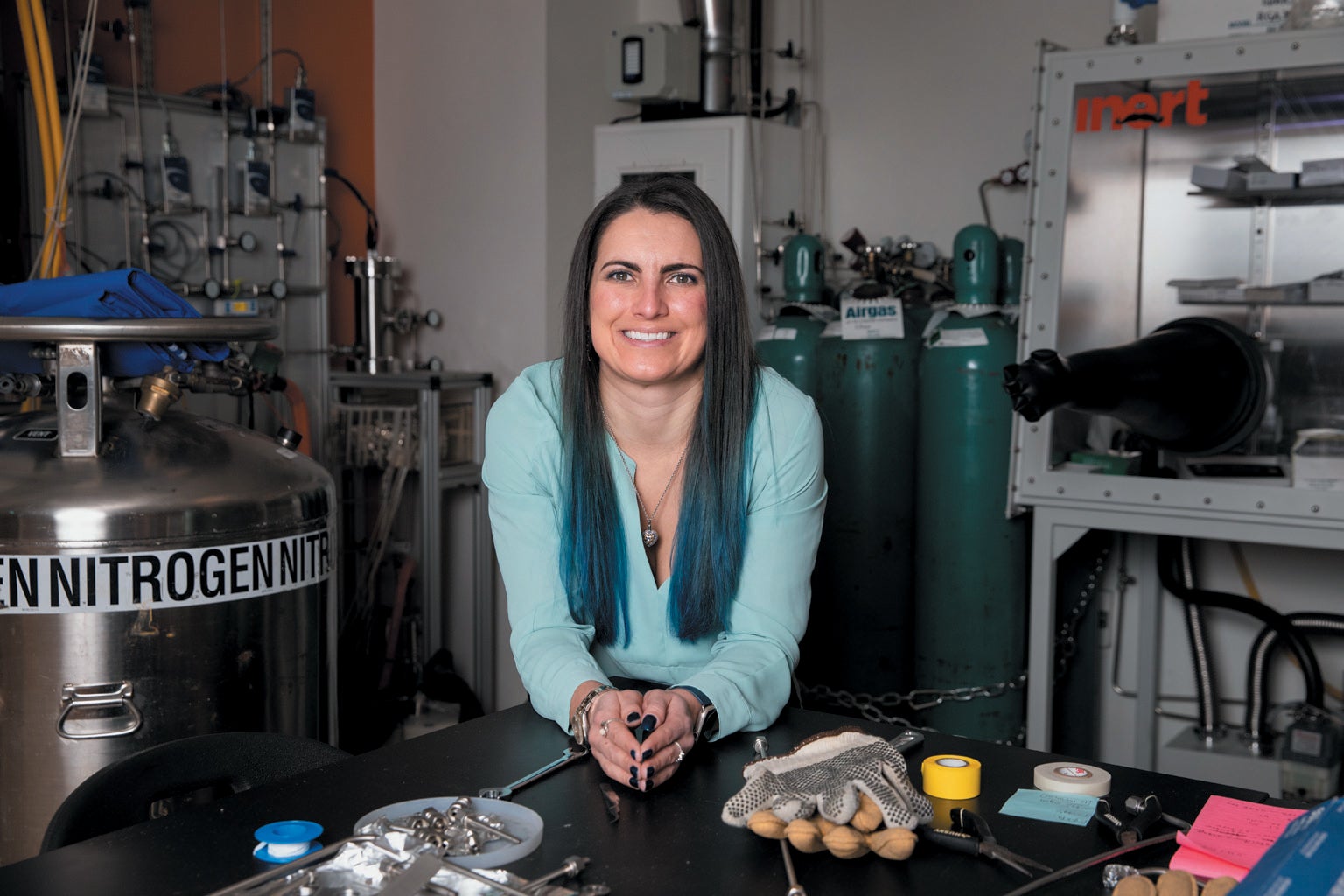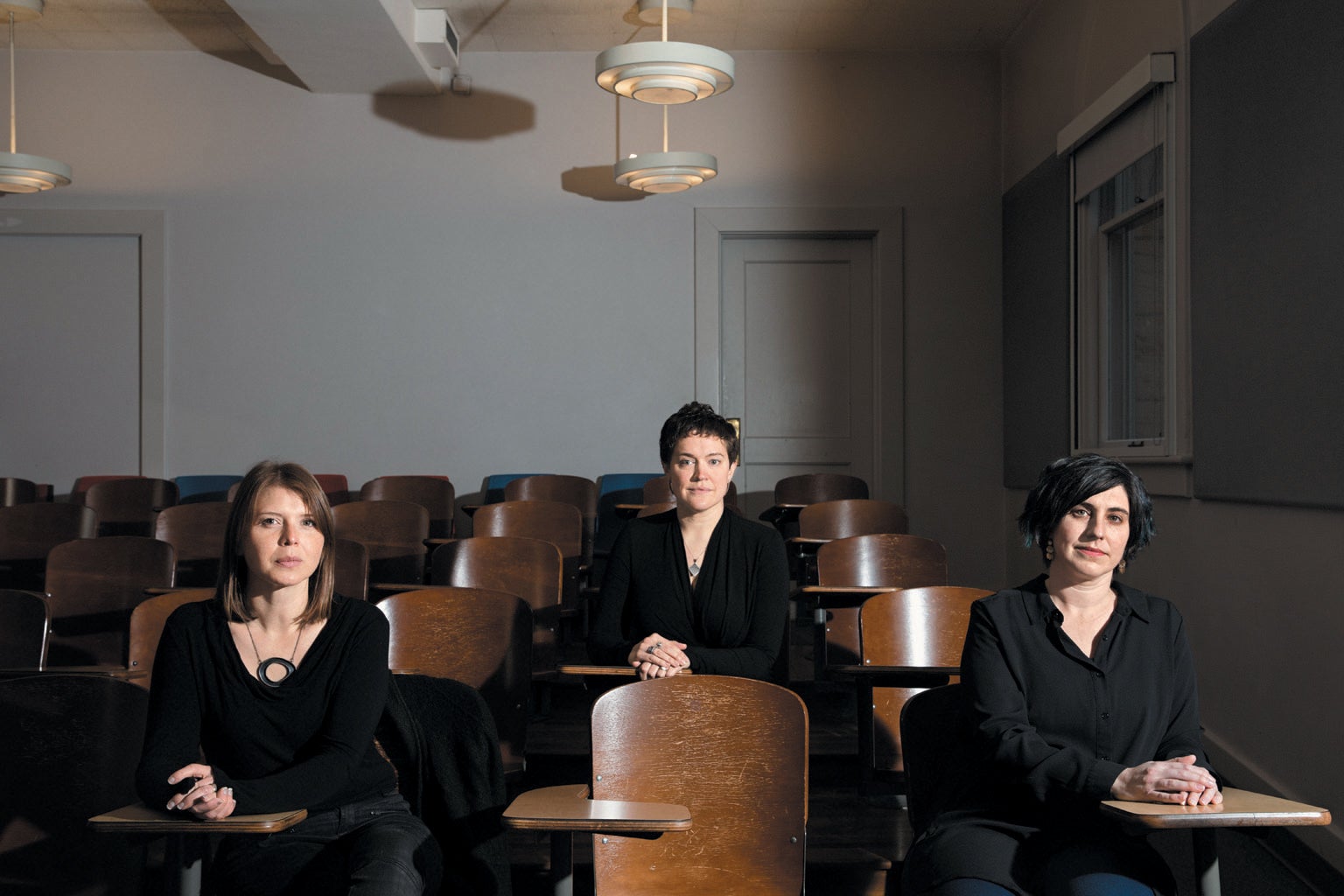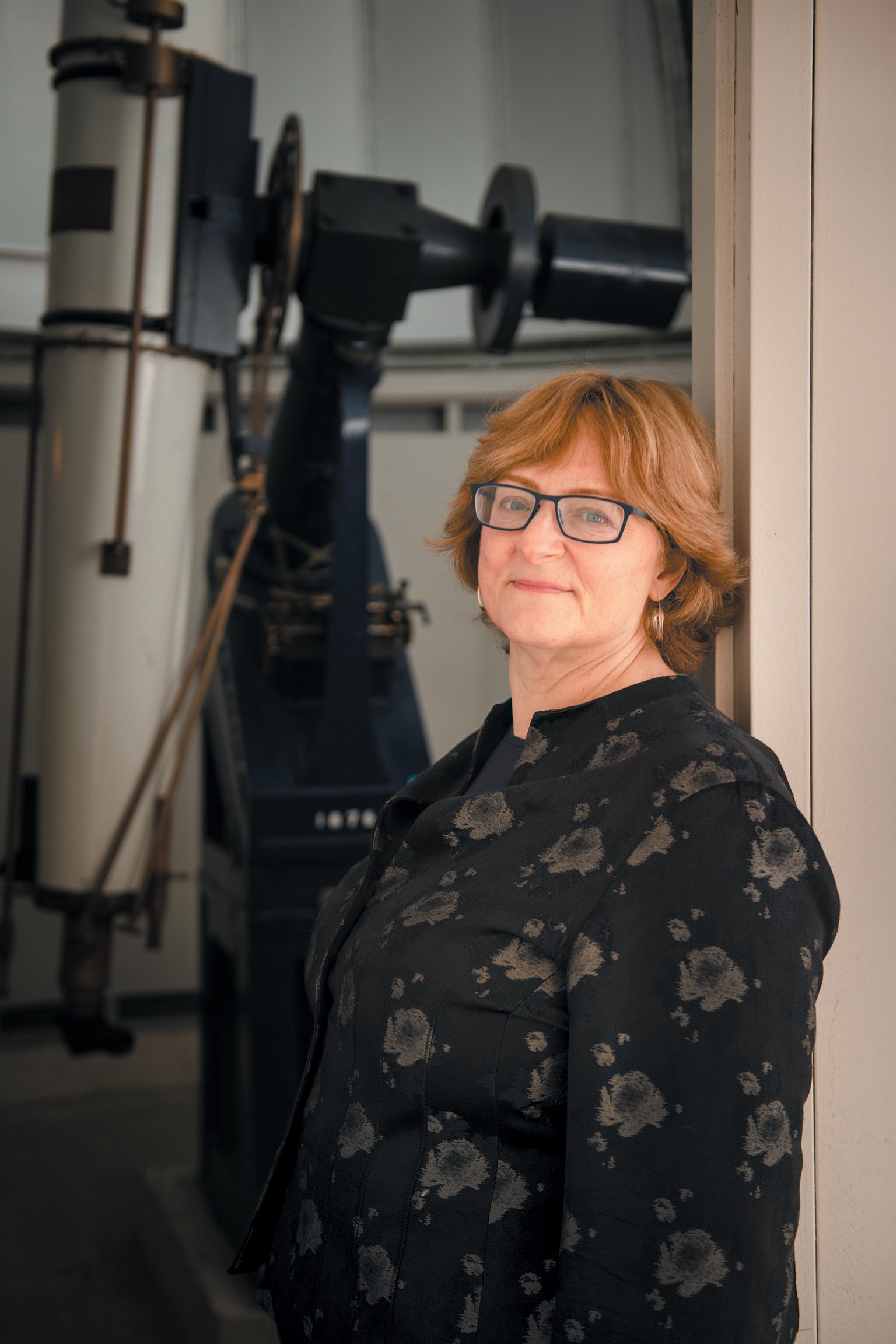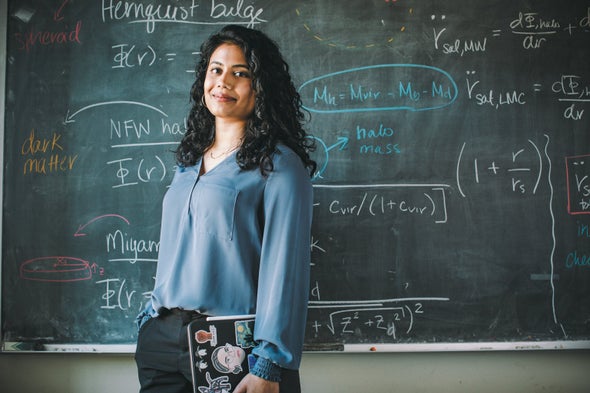Some years ago I made up a list of things I was tired of reading in profiles of women scientists: how she was the first woman to be hired, say, or to lead a group, or to win some important prize. I had just been assigned a profile of a splendid woman astronomer, and her “firsts” said nothing about the woman and everything about the culture of astronomy: a hierarchy in which the highest ranks have historically included only scientists who are male, white and protective of their prerogatives. My list evolved into the “Finkbeiner test,” and to abide by it, I pretended we had suddenly leaped into a new world in which gender was irrelevant and could be ignored. I would treat the person I was interviewing like she was just an astronomer.
Later, working on another story, I started hearing about a cohort of young women astronomers who were the ones to call if I wanted to talk to the field’s best. If the top of the scientific hierarchy now included large numbers of women, I wondered whether they might live in a post–Finkbeiner test world—that is, whether they were just astronomers, not “women astronomers.” I turned out to be 180 degrees wrong. True, they are at the top, but they are outspokenly women astronomers, and they are remaking astronomy.
Earlier generations of women had worked against the restrictions of the hierarchical culture, but change was glacially gradual, partly because the women were few. With time, however, small changes in their numbers added up and then tipped over, creating a different world. This recent cohort of women, who earned doctoral degrees around 2010, wins prizes, fellowships and faculty positions; does not suffer foolishness; and goes outside the established rules to make its own. “We create the culture we want,” says Heather Knutson, who won the Annie Jump Cannon Award in 2013. She is a full professor at the California Institute of Technology and studies the properties of exoplanets. “There are more of us now, and we have the power to shape it.”
One of the rules of their world is that it includes not only women but also people who have been marginalized for other reasons, that is, people of color, disabled people, LGBTQ+ people and those who are nonbinary—people whose numbers in the field are still strikingly unrepresentative.
These women astronomers are scientifically and culturally ambitious, and they shine of their own light; they sparkle. Their world still has restrictions but not as many, and the women react to them more defiantly. “We don’t want to change ourselves to fit the mold,” says Ekta Patel, a Miller postdoctoral fellow at the University of California, Berkeley, who simulates the behavior of satellite galaxies. “I enjoy being a girl,” says Lia Medeiros, a National Science Foundation postdoctoral fellow at the Institute for Advanced Study in Princeton, N.J., where she studies black holes. “And I’m going to be a girl all over their physics. This is my world, too.”

Women have been astronomers since forever, but they have needed to be made of iron. Vera C. Rubin, who got her Ph.D. in 1954, was advised in school to stay away from science. She kept going anyway by telling herself she was just different from other people. She did her graduate studies where her husband’s job took them, raised children and then got a position where she was the only woman. She discovered the first solid evidence of the dark matter that, years later, is still one of cosmology’s biggest mysteries. She was elected to the National Academy of Sciences (NAS), won the National Medal of Science and, after she died in 2016, had an ambitious observatory named after her; one of its missions is to map dark matter.
Back in 1965, Rubin confronted the Hale Telescope’s no-women-allowed rule, ostensibly imposed because observing is an all-night process and the observatory had no ladies’ room. Rubin cut a piece of paper into the shape of a woman with a skirt and pasted it on a bathroom door, creating the Hale’s first ladies’ room.
Rubin was extraordinary, but her work conditions were dead standard. All women astronomers in her world—those earning doctorates between the mid-1950s and the mid-1980s—had the same stories, which disconcertingly often mention bathrooms. The women were not admitted, were not allowed, built careers around their families, developed thick shells impervious to aggression and were almost completely isolated. Their best bet was to blend in with the male culture of astronomy. Margaret Burbidge—Ph.D. 1943, co-discoverer of the formation of the universe’s chemical elements, awarded the National Medal of Science and elected to the NAS—refused the women-only Annie Jump Cannon Award because she thought women should be discriminated neither against nor for. A woman astronomer in Rubin’s world was so alone as to be virtually sui generis—one of the few of her kind. Meg Urry, Israel Munson professor of physics and astronomy at Yale University, says that for her, Rubin was an “existence-proof.”
But in the 1960s and 1970s a series of court decisions, affirmative-action policies, laws and executive orders mandated that universities no longer exclude women and minorities for either study or employment. By the time Urry got her Ph.D. in 1984, some constraints on Rubin’s world were illegal, and others were publicly deplored.

By 1987 Urry was working at the Space Telescope Science Institute (STScI) on active galactic nuclei, unusually bright objects accompanied by light-years-long jets. She found that a subset of these objects were the same creature, eventually shown to be a supermassive black hole embedded in a galaxy and sending out jets. STScI was then only six years old, and of the first 60 scientists it hired, 59 were men. In 1992 Urry organized a series of conferences, eventually run by the American Astronomical Society (AAS), on women in astronomy. That year’s meeting was held in Baltimore. The resulting advisory, called the Baltimore Charter, pointed out that as long as women were in charge of familial life, their careers were going to look different from men’s. It recommended, among other things, “swift and substantial action” against sexual harassers and implementation of the tenets of affirmative action—including, most radically, Urry says, that hiring shortlists should include at least one woman. But the biggest impact of that first conference, Urry says, “was being in a room with 200 women astronomers. Before that you’d meet three women in the ladies’ room, so this was a huge and shocking thing.”
Demographic surveys of Urry’s world—women who got their Ph.D.s roughly between 1985 and 2010—show that in the 1990s women were just under 15 percent of the astronomy postdocs and assistant and associate professors and around 5 percent of the full professors. Given their low numbers, women in this environment still thought it best to blend in with the established culture. “In Meg’s world,” says Nicolle Zellner, Ph.D. 2001, co-chair of the AAS’s Committee on the Status of Women in Astronomy and a full professor at Albion College in Michigan, “women worked hard, fit in and hoped to be rewarded.”
Over time the number of women slowly went up to almost enough. In 1999 women were about 16 percent of the assistant and associate professors of astronomy; in 2013 they were around 22 percent. In 1999 women were 7 percent of the full professors; in 2013 they were 14 percent. These changes in numbers, Urry says, drove changes in policy and practice.
Institutions and professional societies increasingly adopted the Baltimore Charter’s ideas, including offering affordable child care and parental leave, adapting tenure deadlines to family circumstances and publishing codes of conduct. Prizes began to allow self-nomination, avoiding some of the bias of the nomination process.
Eventually women’s increased numbers and reduced restrictions created widespread conditions for what I think of as sparkle. Sparkle is a fireworkslike quality, noticeable in talks and conversations, that in earlier generations of astronomers was most obvious in young men: visible brilliance, intensity, easy confidence and a springy joy. Quantifying sparkle is tricky. Most of its metrics—time on telescopes, named invited talks, citations for papers, leadership of teams—are hard to define and count precisely. But some examples illustrate the point. See, for instance, the fraction of prizes given to women by either the Kavli Foundation or the AAS for general scientific contributions: from 2001 to 2005 it was 4 percent; 2006 to 2010, 12 percent; 2011 to 2015, 23 percent; 2016 to 2021, 30 percent. Or the fraction of panel seats granted to women for the NAS’s decadal surveys to decide the future course of astronomy: 1990, 8 percent; 2000, 15 percent; 2010, 27 percent; 2020, 43 percent. Or look at prestigious postdoctoral fellowships that award research money to be taken to whatever institution one chooses, including the Chandra, Sagan, Einstein and Hubble postdoctoral fellowships. From 1996 to 2010, between 24 and 28 percent went to women; 2011 to 2015, 31 percent; 2016 to 2021, 45 percent. In 2021, of the now merged Sagan Einstein Hubble fellowships, awarded by NASA, women won 58 percent.

Notably, somewhere around 2015 the lines charting all three metrics took a fast turn to the northeast. Moreover, women in this post-2015 subcohort are visibly “badasses,” says Jessica Werk, Ph.D. 2010, a Hubble fellow and associate professor at the University of Washington who studies the gas in and around galaxies: “They really don’t take people’s shit.”
Caitlin Casey, Ph.D. 2010, was a Hubble fellow, won the AAS’s Newton Lacy Pierce Prize and is now an associate professor at the University of Texas at Austin. She studies the lives of early massive galaxies, best observed at many wavelengths and in enormous surveys with teams of hundreds. She leads two teams, one surveying millions of galaxies using the major telescopes in space and on the ground and the other for an upcoming survey, using the James Webb Space Telescope, to look back to a billion years after the beginning of time for young galaxies.
When she was a postdoctoral researcher, Casey heard advice from senior scientists about navigating academia: “Work extra hard. Take telecons at 4 A.M. Put your head down until you’re safe.” She and her friends, also in junior positions, thought the advice was bad. They told one another, “That’s a load of crap. Why don’t we do our own thing and see if we get hired?” She was hired. As a new faculty member, she was again advised against activism before tenure. “I worried about that, but I decided to ignore it,” she says. “I got tenure.” Every time she gets similarly bad advice, she says, “I muster the presence of these other women.”
The sparkly cohort knows that its backbone is based on the presence of other women. Sarah Tuttle, Ph.D. 2010, an assistant professor at the University of Washington, builds instruments to study nearby galaxies. “When there are three of us,” she says, “we can spread out the work; there’s more room to throw elbows.” Laura Chomiuk, Ph.D. 2010, a Jansky fellow and associate professor at Michigan State University who studies novae, adds, “I do feel like I have allies. I can always find an ally.” They either join networks or start their own. They have lunches, meet at conferences, buttonhole departmental women visitors, set up private Facebook pages and Slack channels, and are all over Twitter. “Every university I’ve been at has had a women’s group,” says Danielle Berg, Ph.D. 2013, an assistant professor at the University of Texas at Austin who studies the evolution of star-forming galaxies.
If you feel a group has your back, you are freer to be your own individual self. “I don’t want to be a blank-faced robot astronomer,” says Sinclaire Manning, Ph.D. 2021, a Hubble fellow at the University of Massachusetts Amherst who studies brilliant dusty young galaxies. “I can’t not be a Black woman, and I would never hide that I am.” Berg had purple hair and wore a bright green suit to a job interview, and, she says, “they decided that was a good thing.” With backing, you are also free, like Casey’s friends, to disagree with established culture. Sarah Hörst, Ph.D. 2011, an associate professor at Johns Hopkins University, studies atmospheres around planets and moons. She told me, “My first year here I thought, if I have to sit through this for seven more years [until tenure], what I will be at the end of it is not going to be someone who changes things. If I had to sit quietly during faculty meetings, I’d have quit.”
Some of what they are not sitting quietly through is astronomy’s traditionally sexist, aggressive culture—people on committees saying things like, “Sure, she’s pretty enough to hire,” remembers Laura Lopez, Ph.D. 2011, who was both a Hubble and an Einstein fellow and is now an associate professor at Ohio State University studying the lives and deaths of stars. “In the Zoom era, I can immediately message the department chair and say, ‘Speak up right now,’ and he does.”
When people in the audience at a presentation ask questions belligerently, Berg responds, “Do you feel better? Can I continue?” Catherine Zucker—Ph.D. 2020, a Hubble fellow at STScI who works on the interstellar medium—redirects: “I just say, ‘Let’s touch base afterward,’ and no one ever does.”
Most notably, the new generation of astronomers is not being quiet about sexual harassment, which, in spite of great publicity and its breach of every code of conduct at every institution, is still common: a 2018 NAS report found that 58 percent of women in STEM academia had been sexually harassed, and only 6 percent of them reported it. But a discontinuity may have occurred in 2015 when an ongoing sexual harassment case involving prominent astronomer Geoffrey Marcy was reported by BuzzFeed and then many other major publications. Women now file harassment cases more often and name names, not only in the old whisper networks but also in the news and social media.
Emily Martin, Ph.D. 2018, a 51 Pegasi b fellow at the University of California, Santa Cruz, who builds instruments to study exoplanets, was a graduate student when her lab’s married deputy director repeatedly said he had feelings for her. When she did not reciprocate, he confronted her. Martin filed several complaints against him, including a formal charge to the Title IX office in charge of enforcing the university’s sexual harassment policy. The office concluded that there was insufficient evidence that he had violated the Faculty Code of Conduct or the policy on sexual harassment, in part because his behavior was not severe or pervasive enough to prevent her from finishing her degree and obtaining a postdoctoral position. So she wrote an account for the Web site Medium.*
Hörst reported a man who sexually harassed her to her university, but officials claimed he had done nothing wrong. She had been told that the same man had harassed other women, and because the others, worried about his vindictiveness, did not want to make his name public, Hörst agreed not to name him. She has suggested to conference organizers that the orientation of poster rows in meeting rooms should be changed so that presenters standing by theirs are always publicly visible and cannot be cornered.
Kathryne Daniel, Ph.D. 2015, an associate professor at Bryn Mawr College who works on theoretical galactic dynamics, says when she is sexually harassed, “I let them pretend it didn’t happen, [or] I say, ‘You must be so embarrassed.’ There are no robust ways of reporting that protect the reporter.”
Chomiuk has not been harassed, but when a proposed faculty visitor turned out to be an astronomer who was then on leave without pay from Caltech for sexual harassment, she argued against the appointment. This “led to drama,” she says. Others apologized for him; people told Chomiuk “he says he didn’t do it” and “we’d bring him in for the science.” But in the end the department agreed with her. “I could have just let it go,” she says, “but aaargh, I couldn’t.”
Uncertainty about whether your career will go up in flames, cynicism about institutional responses, advocacy on behalf of others and worry about the harassers’ next targets are all standard responses to sexual harassment. In spite of the difficulties, young women increasingly do not let it go. Casey wrote a chain of tweets listing her own experiences and added, “To all the young folks out there: document abuse. If you don’t want to share it now, one day you’ll be in a position of greater power/freedom.”
The other issue that young women astronomers speak up about is bias, the deep cultural belief that, for instance, women are good at certain things, and science is not one of them. Like sexual harassment, bias, both unconscious and explicit, is widely acknowledged and is covered in every code of conduct. Where it was once endemic and obvious, it now is slightly less endemic and operates just below the visible level. Urry has been on hiring and promotion committees for the past 30 years and says she still sometimes sees a man presented as a genius when he has not quite “done his genius thing yet,” whereas people question whether a woman with comparable accomplishments did the work on her own. Melodie Kao—Ph.D. 2017, a former Hubble fellow and current Heising-Simons 51 Pegasi b fellow at the University of California, Santa Cruz, who studies the magnetic fields of planets and low-mass stars—says she herself has had to actively resist being harder on women’s proposals.
A partial solution, beginning in 2018, has been to implement a system of “dual-anonymous” proposal review, that is, one in which neither the reviewers nor the proposers know the other group’s identities. The major funding agencies and observatories now use dual-anonymity, and although the results are based on a small sample, the success rates of women’s proposals seem to have gone up, albeit not dramatically. “We’re moving from conscious, overt, unapologetic discrimination to unconscious bias,” says Laura Kreidberg, Ph.D. 2016, who won the Annie Jump Cannon Award and is the founding director of the department of atmospheric physics of exoplanets at the Max Planck Institute for Astronomy in Heidelberg, Germany. “For now it’s strong, but I have a huge amount of hope of getting rid of it.”
Because bias and sexual harassment seem to have deep, perennial roots, a few young women say that they initially wanted to burn the whole system down. But then they thought that rather than destroy a culture, they could make their own. “We’ve come to know each other in enough numbers,” Daniel says, “[that] we can start to make sure a woman is in every decision-making room.”
Kreidberg is creating a wholly new department at her institution. She wants thinking to be more collaborative, “done at a blackboard,” she says. “I want juniors to speak up and ask questions. And I want people to not have so many responsibilities they can’t be creative—there’s no way around long hours at the cost of other things, but I have a family, I’m a runner, I tango, and without these breaks, I run out of ideas.” Berg leads a 50-person team: “Everyone knows what’s going on; no cliques, and no cutting people out.” Casey co-leads a group of more than 200 people whose rules are, “Don’t worry about papers that disagree, address it in a future paper, and don’t be a dick. Respect the human, let the science happen, and it’ll work itself out.”
This young cohort of women astronomers is exquisitely aware of earlier generations’ generosity and of its own responsibility to future scientists. “We recognize the generations of women who reached down and pulled us up, and a lot of us think now we need to do the same,” Werk says. Urry estimates that she has spent roughly a quarter to a third of her career changing the conditions for women. “You have to stay in the field to change things,” Hörst says. “If it had been intolerable for Meg [Urry], I wouldn’t be here.”
Most of these young women mentor undergraduate and graduate students who are not necessarily their assigned advisees. Kao teaches workshops that she markets as being on early-career skills but that are also about vulnerability and emotions, “how we know when we need to tend to our boundaries or to take better care of other people.” Others run programs and workshops on the entire constellation of bias issues. They offer classes for children interested in science. They serve on their institutions’ Diversity, Equity and Inclusion (DEI) committees, and they note that the DEI work tends to be done mostly by women and minorities. “I’m trying to think of a woman who is not an activist,” Medeiros says. Their activism in the past 10 or so years has particularly focused on the demographic populations whose numbers in the field are still too low: “Things are better for us,” Knutson says, “but ‘us’ is still white”: white people make up 60.1 percent of the U.S. population and 82 percent of astronomers. Astronomy’s demographics are disturbing: 18.5 percent of Americans are Hispanic or Latino, but 5 percent of astronomers are; 13.4 percent of Americans are Black, but 2 percent of astronomers are. A recent NAS report called the numbers of people of color in astronomy “abysmally low.”
“I’m a first-generation woman of color who has to learn a completely new world,” says Melinda Soares-Furtado, Ph.D. 2020, a Hubble fellow at the University of Wisconsin–Madison, who studies stars with odd chemical abundances. “I can code-switch, but it’s exhausting.” Kao is first-generation Taiwanese-American: “From day one I’ve struggled to belong in the space I’m in. Half the time I want to change my name.” Lopez says, “I’m Mexican-American and have cerebral palsy, so that’s another set of hurdles.” She once went to a meeting with maybe 40 people whose sexual orientation and race or ethnicity were something other than straight and white, and she was shocked at “how many of us had encountered the [assumption that] our advisers had done our work.”
The restrictions that people at these intersections deal with resemble the barriers of Rubin’s world: being the only one like you in the room means sometimes wondering whether you should even be in that room, and it means the other people in the room sometimes think you are incapable of doing what you have just done. “I’m never the only woman there, but for sure I’m the only Black woman,” Manning says. “Isolation is weird—some days it’s ‘Why don’t I go where I’m not being looked at like this,’ and some days it’s ‘No, I need to be here so someone else can see me.’”
When I started talking to this bunch of young and sparkly women, I thought they might describe themselves as just astronomers, not women astronomers. What they have done is more interesting: they have reframed “astronomy” to necessarily include “women”—they have merged “women” into “astronomy.”
For instance, those of them offered the Annie Jump Cannon Award that Burbidge rejected have accepted it with pleasure and not as a prize for people who would not otherwise win prizes. The point, they say, is that they are women; they cannot escape it, and they might as well go ahead and have green hair, wear dresses to conferences and win women’s prizes. They have been intelligent, creative and hardworking all along, but now they are also conspicuous; they have made themselves, as Manning says, seen. They are like Vera Rubin, slapping the lady-shaped icon on the door and telling the rest of their world to get used to it.
*Editor’s Note (4/4/22): This paragraph was revised after posting to clarify the timing of Emily Martin’s complaints and the causes for the Title IX investigation’s conclusions.


